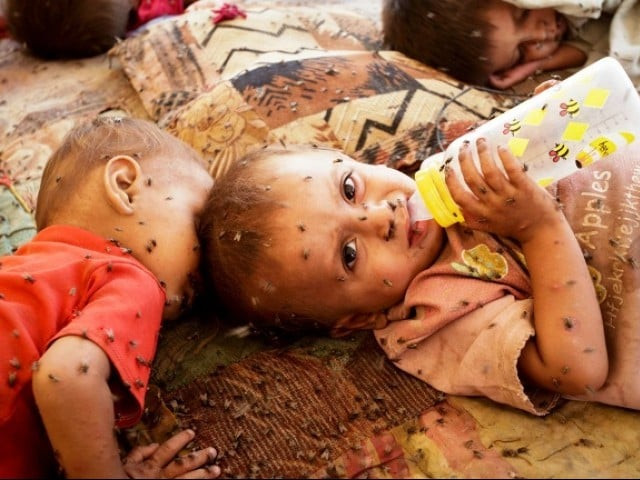State of Children: Pakistani child mortality rates nearly twice as high as India’s
Despite progress, the country is not doing as well as its regional counterparts.

Despite progress, the country is not doing as well as its regional counterparts. PHOTO: AFP
A Pakistani child is almost twice as likely to die before his or her fifth birthday as an Indian child. Despite significant improvements over the past two decades, Pakistan ranks towards the bottom among countries in the world when it comes to infant and neonatal mortality, according to a report issued by the United Nations Children’s Fund (Unicef).
According to the 2014 State of Children in Pakistan report, one in every 14 Pakistani children (7.1%) die before their first birthday, and one in every 11 (9.1%) do not survive to their fifth birthday. In 1990, the proportion of children who died before the age of one – the infant mortality rate – was 10.6%, and those who did not make it to the age of five – the under-five mortality rate – was 13.8%. While these numbers represent a dramatic improvement over the past two decades, they are still much worse than even comparable countries around the world.

In India, for instance, the infant mortality rate in 2012 was much lower at 4.4% and even the under-five mortality rate was at 5.6%. In 1990, India did start off with lower rates for both than Pakistan – 12.6% and 8.8%, respectively – but has made more progress in reducing both numbers.
The mortality rates among children are often seen as a proxy for the level of social development in a country, since they reflect the level of nutrition, parents’ education, and access to health services. The report, the second such study on Pakistan’s children by Unicef, cites a lack of clean water and sanitation facilities as one of the biggest impediments in reducing child mortality.
Lack of access to clean water and sanitation facilities has a wide range of impact on children’s health and the current status of sanitation and poor hygiene practices has led to significant public costs, such as premature deaths, economic and financial costs due to diseases attributable to poor sanitation, environmental costs, and other welfare costs.

As one of the most powerless groups in society, children often bear the physical and emotional costs of poverty. Poverty experienced by children can affect the rest of their lives, and is more often passed from generation to generation, affecting the long-term health, well-being, and productivity of families as well as society as a whole.
Low levels of education compel families to engage in labour-intensive, low-paying jobs that generate insufficient income to satisfy the needs of the family. The distress and poor health conditions that result from the imbalance between household demands and parents’ ability to satisfy those demands pushes children into work and a lifelong struggle to meet levels of even basic subsistence and robs them of their basic rights to education, good health, and safety.
The challenges to child protection as a result of poverty and inequality are more difficult to overcome when they are compounded by social exclusion and discrimination. Poverty also undermines support systems, whether these are the informal structure that would normally provide mutual support among community members in hard times, or formal structures such as economic safety nets and social services, especially where government lacks the capacity and resources to make these measures effective.
Children growing up in poverty are less likely to access basic social services of quality or to benefit from preventive initiatives or protection mechanisms.
Published in The Express Tribune, July 18th, 2015.

















COMMENTS
Comments are moderated and generally will be posted if they are on-topic and not abusive.
For more information, please see our Comments FAQ